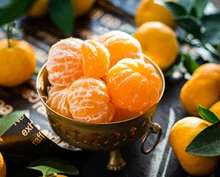
Indian Gooseberry is an excellent remedy for diabetes, skin diseases, hair loss and digestive problems. This is the result of the highest content of vitamin C. Gooseberry is also rich in iron and calcium.
Paddy seedlings should be planted in June-July. 60 saplings can be planted per acre. The pits should be 1 m deep, 1 m long and 1 m wide. One-year-old seedlings should be planted. 8 m long can be maintained between seedlings and rows.
Items
Champakkad Large is a variety found in the Western Ghats and is suitable for cultivation in Kerala. Champakkad Large yields large fruits.
Banarasi, which grows tall, is also suitable for Kerala. The berries are large and can be split into three parts. It can weigh up to 38 grams. Krishna and Kanchana are the other species.
Care
Care should be taken not to form peaks until they reach a height of one meter. It is important to destroy the shoots that grow from the bottom. Excess shoots should be removed in March-April.
In the orchards, cassava can be grown as an intercrop during the growing season. It can last for four to five years. In the early stages of growth, the soil should be watered at regular intervals depending on the moisture content. Although mature trees are not watered by default, watering at 15-day intervals during April-May will help in good fruiting and control of fruit ripening.
The trees start bearing fruit in three to four years. But it can take 10 to 12 years to get a continuous good yield. The fruits are ripe for harvest in January-February.
Diseases and pests
Diseases and pests are very rare in Indian Gooseberry. Common problems are rotting and mold growth. To prevent this, fruits are kept in saline solution. Kerosene can be poured on the worm-infested areas to control wood-eating worms. Neem oil at the rate of 30ml / litre or neem seed extract at the rate of 50ml / litre can be sprayed to control the nematodes.










